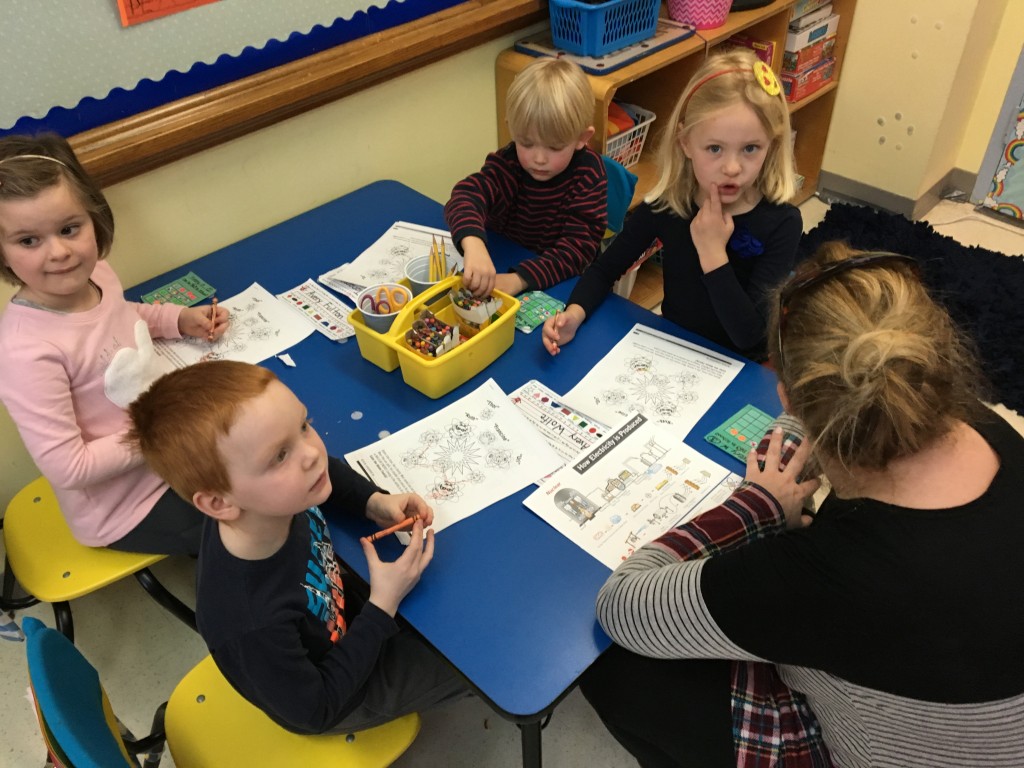Introducing Nuclear Power to a Five-Year-Old
(This article was submitted in concert with a presentation given at the 2019 American Nuclear Society Annual Meeting entitled "Teaching the Value of Nuclear," and is the first of two articles on that presentation.)
Recently, I visited my local Kindergarten and Jr-K classes to try and explain how nuclear power works. It was a little tricky knowing where to start.
I held a lofty goal of squeezing in the concepts of electricity, magnetism, atoms, fission, and criticality into short 20-minute visits. I wasn't attempting to go into radiation, radioactive decay, neutron interactions, moderators, coolants, or aspects of the fuel cycle, but still, I had high aspirations given the age range. The children, ages 4-6, had not yet learned the concepts of mass or weight, and I found myself trying to explain mass defect and binding energy.
For anyone else who might be eager to take on this challenge, I thought I would share my approach and reflections. The day before or immediately prior to my visit, I had the teachers read the books Oliver and Bird, A Book about Electricity by Geoff Waring, and Switch On Switch Off by Melvin Berger. The teachers also took their classes on a walk outside their schools to spot the electrical wires, and on a "hunt" around the classroom to try and find items that use electricity. The children had many questions about the wires running along the streets and disappearing into the ground. They were fascinated that the wires were inside the walls (or that there even was an inside to the wall). It was as if a secret world underground and inside walls had been revealed to them.
Given that the visits were so short, I broke up the material into 3 days of discussion and activities.

Students in one of Leah Parks' sessions enjoy coloring book pages related to the topic. Photo courtesy Leah Parks.
Day 1 - Electricity, Magnetism and Power Plants
- Set Up - Pages 2, 4, 5, and 10 from the Atoms Family Coloring Book), one pinwheel per child
- Discussion - I had an assistant from the class turn the lights on and off, and I asked the students what I was doing. I continued to ask probing questions of the students and tried to let them explain what they might have learned from the books. One child's response that absolutely thrilled me in its accuracy and completeness when asked about electricity was, "The electrons go on the wires from the power plant to our school and then back." Another child blurted out, ""Electricity is things swimming in wires!" I explained that we get electricity from power plants where a large amount of water is boiled to make steam which moves - like the steam coming from a teapot - The steam turns a turbine - like how a pinwheel turns when you blow on it. The movement of the turbine spins giant magnets inside of a coil of wires - called a generator - which creates electricity by freeing the electrons from the atoms and the electrons travel along the wires.
- Activity - Students practiced blowing on the pinwheel and observed how their breath makes it move. They imagined their breath is the steam produced from a nuclear reactor. To demonstrate how magnetism and electricity are related I brought a toy generator kit. While children took turns experimenting with the toy generator, circuit, and magnets the remainder of the class colored their coloring book pages.
Day 2 - Atoms and Fission
- Set up - One Anatomy of an Atom activity sheet, one inflated long balloon per child
- Discussion - I reminded the students what we learned the day before about steam turning turbines, generators and electricity. I explained that one way to create the heat to make steam is to split an atom. I explained the parts of an atom and that we would be pretending the balloons are atoms to demonstrate how energy is released when you split an atom. I explained that when a neutron bumps into the atom the right speed it can split it.
- Activity - The students put together the anatomy of an atom model. While the students worked on their atoms, I assisted with balloon cutting. We pretended that the scissors were a neutron flying toward the atom.
Day 3 - Chain Reactions
- Set up - 10-15 dominos per child
- Discussion - Explain how we can create a chain reaction where splitting atoms release neutrons which split other nearby atoms and so on. This releases a lot of energy continuously which is used to boil water in the nuclear power plant.
- Activity - Have the children experiment with the dominos to set up their own chain reactions.

Leah Parks and a student engage in a fission simulation using animal balloons. The balloon, when cut, will zoom in two opposite directions, simulating the energy and motion of fission fragments. Photo courtesy Leah Parks.
Overall, the children were more than receptive and able to learn about these concepts. It was truly special, and the teachers were very grateful. At this age, they haven't yet been exposed to the stigma surrounding nuclear power. Well, almost - the only negative dialogue went like this...
Me: "That's a lovely color! Why did you color all the reactor components the same color and what made you decide to use such a bright green?"
Child: "Its toxic!"
Me: "What's toxic?"
Child: "Nuclear is!"
The child later told me he saw toxic nuclear goo on Captain Underpants. Maybe we should be talking more with the producers of kids' cartoons as our outreach!
Leah Parks is an engineer at the US Nuclear Regulatory Commission working in decommissioning. She is currently serving on the ANS Board of Directors and is Vice Chair of the Public Policy Committee.


